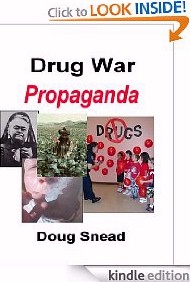|
Propaganda, Edward Bernays, 1928 - intro
Propaganda
(1928) by Edward Bernays
Foreward by Noam Chomsky.
Noam Chomsky on Edward Bernays.
[The] American business community was also very impressed with
the propaganda effort. They had a problem at that time. The country
was becoming formally more democratic. A lot more people were able
to vote and that sort of thing. The country was becoming wealthier
and more people could participate and a lot of new immigrants were
coming in, and so on.
So what do you do? It's going to be harder to run things as a
private club. Therefore, obviously, you have to control what people
think. There had been public relation specialists but there was
never a public relations industry. There was a guy hired to make
Rockefeller's image look prettier and that sort of thing. But this
huge public relations industry, which is a U.S. invention and a
monstrous industry, came out of the first World War. The leading
figures were people in the Creel Commission. In fact, the main one,
Edward Bernays, comes right out of the Creel Commission. He has a
book that came out right afterwards called Propaganda. The term
"propaganda," incidentally, did not have negative connotations in
those days. It was during the second World War that the term became
taboo because it was connected with Germany, and all those bad
things. But in this period, the term propaganda just meant
information or something like that. So he wrote a book called
Propaganda around 1925, and it starts off by saying he is applying
the lessons of the first World War. The propaganda system of the
first World War and this commission that he was part of showed, he
says, it is possible to "regiment the public mind every bit as much
as an army regiments their bodies." These new techniques of
regimentation of minds, he said, had to be used by the intelligent
minorities in order to make sure that the slobs stay on the right
course. We can do it now because we have these new techniques.
This is the main manual of the public relations industry.
Bernays is kind of the guru. He was an authentic Roosevelt/Kennedy
liberal. He also engineered the public relations effort behind the
U.S.-backed coup which overthrew the democratic government of
Guatemala.
His major coup, the one that really propelled him into fame in
the late 1920s, was getting women to smoke. Women didn't smoke in
those days and he ran huge campaigns for Chesterfield. You know all
the techniques--models and movie stars with cigarettes coming out
of their mouths and that kind of thing. He got enormous praise for
that. So he became a leading figure of the industry, and his book
was the real manual.
--Noam Chomsky
(From Chomsky's "What Makes Mainstream Media
Mainstream": a talk at Z Media Institute, June 1997)
[audio mp3 of this intro]
|






